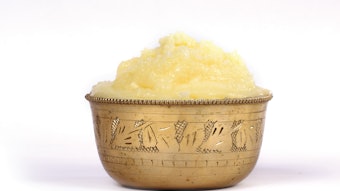
While the conspicuous red face and blemishes of rosacea can be embarrassing enough, they tell only part of the story as a new survey conducted by the National Rosacea Society (NRS) shows that significant physical discomfort often accompanies the visible signs of this widespread disorder now estimated to affect more than 16 million Americans.
In the NRS survey of 1,709 rosacea patients, nearly 93% said they had experienced physical discomfort as a result of the disorder. A burning sensation was the most commonly cited, named by 76% of the respondents. Itching was reported by two-thirds of the patients, followed closely by stinging, mentioned by 61%.
Among the other physical discomforts experienced by the survey participants were tightness, cited by 45%; swelling, named by 44%; tenderness, mentioned by 41%; tingling, 32%; prickling, 25%; and headache, 19%.
“The physical pain of rosacea is often overshadowed by the changes in appearance and the emotional impact of the condition, but all aspects deserve to be addressed,” said Dr. Julie Harper, clinical associate professor of dermatology at the University of Alabama – Birmingham. “Ideally, medical therapy combined with avoidance of individual triggers can help to bring about a remission of symptoms, which will reduce both the emotional and physical toll of the disorder.”
The cheeks were the most common site for rosacea-related discomfort, named by 85% of the respondents, followed by the nose, cited by 58%. The eyes were another commonly affected site, mentioned by 45%, while the chin and forehead were reported by 42% each. Other affected areas included the scalp, named by 21%; the neck, 18%; the ears, 15%; and behind the ears, 11%.
As might be expected, those with subtype 3 (phymatous) rosacea, which often includes swelling of the nose, reported that the nose was the most frequent site of physical discomfort. Those with the eye symptoms of subtype 4 (ocular) rosacea noted that the eyes and cheeks were equally affected by physical discomfort.
Seventy-one percent of those answering the survey said that medical therapy has improved their outward signs of rosacea, while nearly 70% reported that it also reduced their physical discomfort.
“In addition to medical therapy, a gentle skin-care routine with products that are designed specifically for sensitive skin may alleviate some of the physical discomfort associated with rosacea,” Dr. Harper said. “Your dermatologist should be able to help you select those that work best for your individual case.”
Rosacea is a chronic disorder that is often characterized by flare-ups and remissions. It typically begins at any time after age 30 as a flushing or redness on the cheeks, nose, chin or forehead that may come and go. Over time, the redness tends to become ruddier and more persistent, and visible blood vessels may appear. Without treatment, bumps and pimples often develop, and in severe cases the nose may become swollen and bumpy from excess tissue. Burning and stinging are common, and in many patients the eyes are also affected, feeling irritated and appearing watery or bloodshot.
Comprehensive information and materials on rosacea are available on the NRS website at www.rosacea.org.










